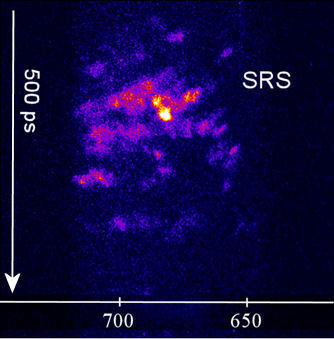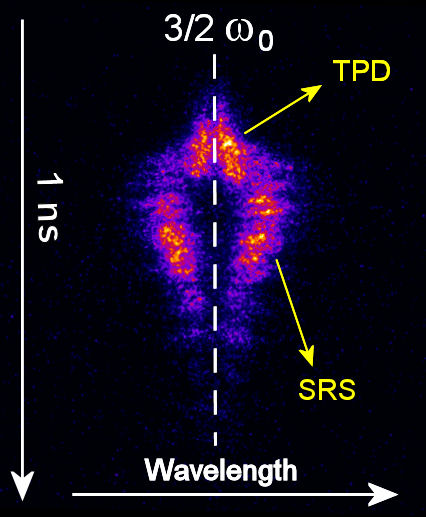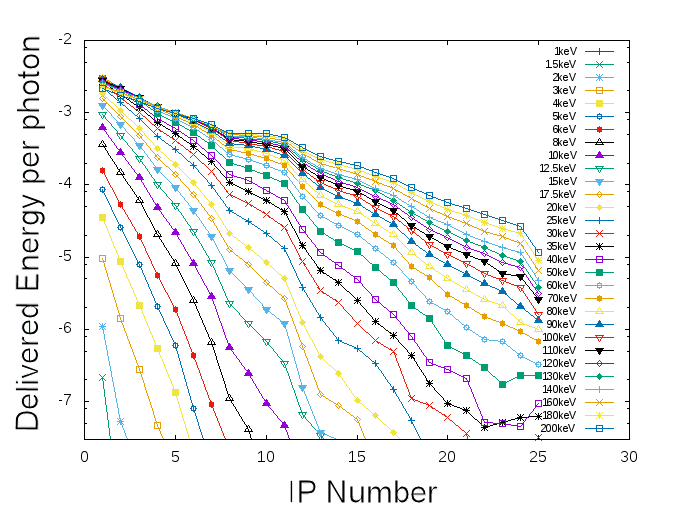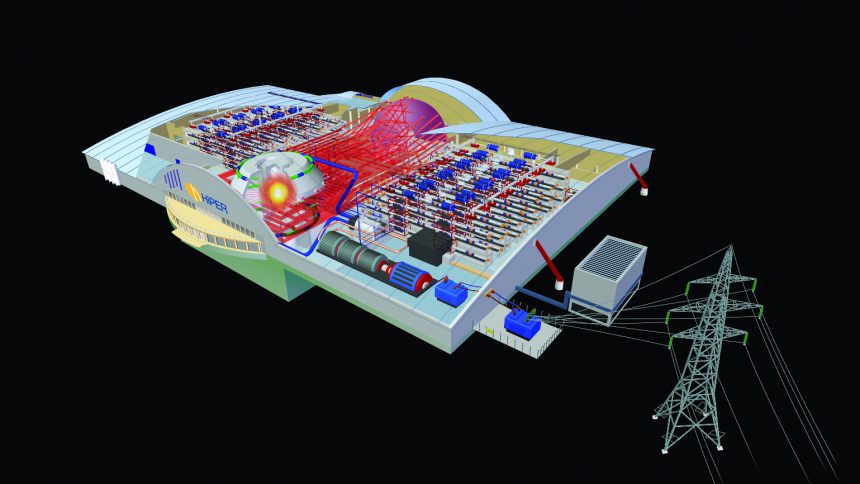The Shock ignition (SI) is a promising two-step approach to Inertial Confinement Fusion (ICF), where a strong converging shock wave is launched at the end of the compression phase to ignite the fuel (R. Betti et al. Phys. Rev. Lett. 98, 155001, 2007).
Both compression of the DT pellet and the shock wave can be produced by a single tailored laser pulse (right image), consisting of a ns long peak at moderate intensities lower than 1015 W cm-2 followed by a short intense spike (300-500 ps) at I≈1015–1016 W cm-2.The main advantage of SI approach is the expected high gain, enabling ignition at moderate laser energies, which are already available at LMJ and NIF facilities. The success of SI concept is mainly determined by the coupling of laser spike with the compressed corona, where an efficient laser absorption, able to generate a few-hundreds Megabar shock wave at the ablation layer, is needed. However, the physics of laser-plasma interaction at laser intensities typical of SI spike, is highly non-linear and still largely unknown.
Our activity is focussed to investigate the laser-plasma coupling in this regime, where parametric instabilities as Stimulated Brillouin Scattering (SBS), Stimulated Raman Scattering (SRS) and Two-Plasmon Decay (TPD), often interplaying, can non-linearly grow and laser filamentation can further affect their relevance. These processes can significantly degrade laser-plasma coupling producing a strong reflection of light (SBS and SRS) and generate suprathermal electrons, which, depending on their energy may preheat the fuel or affect the shock pressure.

Time resolved Stimulated Raman Spectrum

Time resolved spectrum of three halves harmonic spectrum
The activity is presently focussed to two different but correlated issues: the investigation of parametric instabilities and the generation of hot electrons. The first issue includes the onset, the growth rate, the non linear mechanisms and the competition of the instabilities, and finally the dependence of these features on the plasma parameters and interaction conditions. In particular, the competition of SRS and TPD is tricky in real Shock Ignition irradiation conditions, with plasma temperature higher than 5 keV, and it is very important since TPD and SRS generate hot electrons with significantly different energy. An useful mean to investigate parametric instabilities is the spectroscopy of the scattered light; the time-resolved inspection if 3/2 ω0 harmonic is particularly useful to detect the timing of SRS and TPD instabilities.

Typical response curves of the IP layers in a BSC stack to a single-temperature exponential photon distribution for temperatures in the range 1−200 keV.
The second issue includes the measurement of hot electron energy and the correlation of hot electrons with the parametric instabilities which are responsible for their generation. The measurement of hot electron energy requires the development of suitable diagnostics, as for example the spectroscopic detection of Kα emission from tracer layers buried into the targets, the utilization of electron spectrometers, or the design of Bremsstrahlung Cannons (BSC) with a stack of k-edge and differential filters followed by Imaging Plate detectors. BSC detectors are able to measure the X-ray Bremsstrahlung emission spectrum, and, after Montecarlo GEANT4 simulations, allow to retrieve the energy distribution of hot electrons.
An exhaustive knowledge of the effects influencing laser-plasma coupling is therefore necessary to design laser and experimental systems necessary for the SI. The activity is presently carried out in the framework of a project financed by Eurofusion, the European consortium for the development of Fusion Energy, which follows the HiPER European programme. Experimental campaigns in recent years have been carried out at Prague Asterix Laser facility (PALS, Prague), Vulcan laser (CLF, UK), Omega laser (Rochester, USA), LMJ (Bordeaux, France) and Gekko XII (Osaka, Japan) facilities, in collaboration with other european research groups and have been financed by Laserlab-Europe or Eurofusion consortium. Future experimental campaigns are planned also at Shen Guang II and III in China.
The activity is presently carried out in the framework of the European project “Advancing shock ignition for direct-drive inertial fusion” funded by Eurofusion, which will end in 2024.
Latest Publications:
- P. Koester et al., “Recent results from experimental studies on laser–plasma coupling in a shock ignition relevant regime”, Plasma Phys. Control. Fusion 55, 124045, 2013
- D. Batani et al., “Generation of high pressure shocks relevant to the shock-ignition intensity regime”, Phys. Plasmas 21, 032710, 2014
- G. Cristoforetti et al., “Experimental observation of parametric instabilities at laser intensities relevant for shock ignition” Euro Phys. Lett., 117, 35001, 2017
- G. Cristoforetti et al., “Measurements of parametric instabilities at laser intensities relevant to strong shock generation”, Phys. Plasmas, 25, 012702, 2018
- D. Batani et al., “Progress in understanding the role of hot electrons for the shock ignition approach to inertial confinement fusion”, Nuclear Fusion, 59, 032012, 2019
- G. Cristoforetti et al.,” Time evolution of stimulated Raman scattering and two-plasmon decay at laser intensities relevant for shock ignition in a hot plasma”, High Power Laser Science and Engineering, 7, e51, 2019
- L. Antonelli et al., “Laser-driven strong shocks with infrared lasers at intensity of 1016 W/cm2” Phys. Plasmas 26, 112708, 2019
- S. Baton et al., “Preliminary results from the LMJ-PETAL experiment on hot electrons characterization in the context of shock ignition”, High Energy Density Physics, 36, 100796, 2020
- P. Koester et al., “Bremsstrahlung cannon design for shock ignition relevant regime”, Rev. Sci. Instrum. 92, 013501 (2021)


